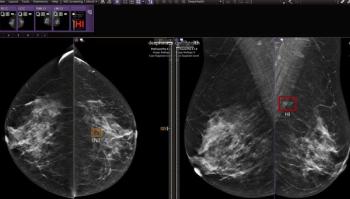
Radiology Industry Groups Oppose Cuts in President’s Budget Proposal
ACR, MITA, and AMIC voiced objections to the proposed cuts through an increase in the assumed rate of utilization of advanced imaging equipment and the implementation of prior authorization for medical imaging.
The American College of Radiology (ACR), the Medical Imaging and Technology Alliance (MITA), and the Access to Medical Imaging Coalition (AMIC) are voicing their objections to
The proposal would cut Medicare imaging reimbursement by $820 million over 10 years through an increase in the assumed rate of utilization of advanced imaging equipment and the implementation of prior authorization for medical imaging.
Funding cuts “will threaten patient access to care and may actually raise long-term Medicare costs,” said the ACR. Calling for Congress to reject the proposal, the groups pointed out that Medicare spending for imaging services is not rising, but declining. Medical imaging reimbursements have been cut eight times since 2006, MITA noted, and there was also a 2.5 percent decline in imaging services in 2010.
According to AMIC, policy proposals to adopt
“The White House’s proposals to cut imaging payments for the eighth time in as many years and to adopt prior authorization for medical imaging are not supported by the data and threaten patient access to timely diagnosis and treatment of heart disease, cancer and other life-threatening conditions,” Tim Trysla, executive director of AMIC, said in a statement.
These cuts have already had an impact on patient health, the groups said. AMIC points out that a study recently published in Health Affairs found that 800,000 fewer dual energy X–ray absorptiometry (DXA) screenings for osteoporosis were performed in 2007 to 2009, as a result of the Deficit Reduction Act of 2005. The coalition asserted that 12,000 fractures and the associated health costs could have been prevented had the scans been performed.
“Medical imaging is a critical component of the modern standard of care,” said Gail Rodriguez, executive director of MITA. “It’s essential that patients have access to the right scan at the right time."
Newsletter
Stay at the forefront of radiology with the Diagnostic Imaging newsletter, delivering the latest news, clinical insights, and imaging advancements for today’s radiologists.


























